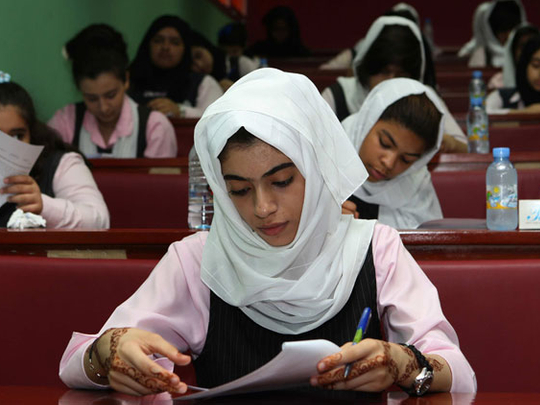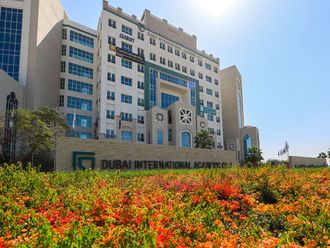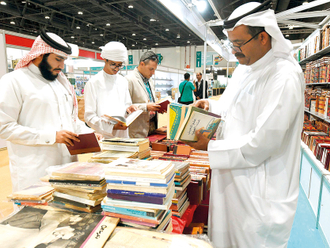
Abu Dhabi: UAE results in an international education assessment programme show the nation’s students come out top in science and maths among Arab countries but reach just 40th place out of 60 in the same tests globally.
Announcing the results on Wednesday, Humaid Al Qatami, Minister of Education, said: “There is no doubt enhancing education is an utmost priority for the nation and these results will be analysed to elevate outcomes to meet international benchmarks.”
The minister explained the achievement of high scores in the Trends in Mathematics and Science Study (TIMSS) and Progress in International Reading Literacy Study (PIRLS) 2011 is not the end.
“It is one of the key indicators used by the Ministry of Education to assess the effectiveness of the educational system, development path and progress in implementing the initiatives of MoE in order to improve student learning outcomes.
“These results are a good start given the recent participation by the UAE in international assessments.”
In the PIRLS and TIMSS 2011 assessments of grade 4 and 8 students, UAE grade 4 students won first place among Arab countries in Reading Literacy and second place in mathematical and scientific literacy.
In addition, UAE came first in grade 8 maths and science literacy among Arab nations, which placed the UAE at the 40th place internationally, according to a report issued by the International Association for the Evaluation of Educational Achievement (IEA), which conducted both TIMSS and PIRLS assessments.
The report showed that grade 8 students scored higher in maths and science compared to grade 4 students.
In all areas, both grade 4 and grade 8 female students achieved higher scores compared to male learners.
Dr Mugheer Khamis Al Khaili, director general of the Abu Dhabi Education Council (Adec) congratulated the prudent leadership, educators and parents on their remarkable achievement, which stood out among 60 countries participating in TIMSS and 55 in PIRLS.
“By participating in the assessments, Adec seeks to assess learning outcomes in our schools, develop educational policies and identify strengths and areas for improvement by comparing our student results with that of their peers in other countries worldwide.
“To achieve these goals, we focus on developing the problem solving, innovation and critical thinking skills,” said Dr Al Khaili.
Some 459 schools across the UAE took part in the TIMSS and PIRLS assessments at grade 4, including 164 public schools and 295 private schools, while 455 schools participated in TIMSS at grade 8.
The TIMSS exam, which assesses the maths and science skills of 10 and 14-year-old pupils, was conducted in more than 50 countries.
The tests were scored on a scale from zero to 1,000, with 500 representing the average.
TIMSS classifies pupils in four achievement levels: advanced, high, intermediate and low.
In contrast to the regional trend, grade 8 students performed relatively better than younger students in the UAE as evidenced by their results being closer to the international scale average, according to the report.
TIMSS assess grade 4 and grade 8 students in mathematical and scientific literacy every four years and the PIRLS assesses reading literacy at every five years.
Participating schools were randomly selected by IEA.
A series of workshops were organised by Adec for the public and private schools participating in the international assessments.
TIMSS and PIRLS were conducted in the participating schools from February 20 to April 25, 2011, as part of the regular school day.
Both assessments do not need preparation as they assess the learning experiences and skills acquired by students at school and home.
International quality controllers and inspectors were selected by IEA to visit the schools during the assessment period.











